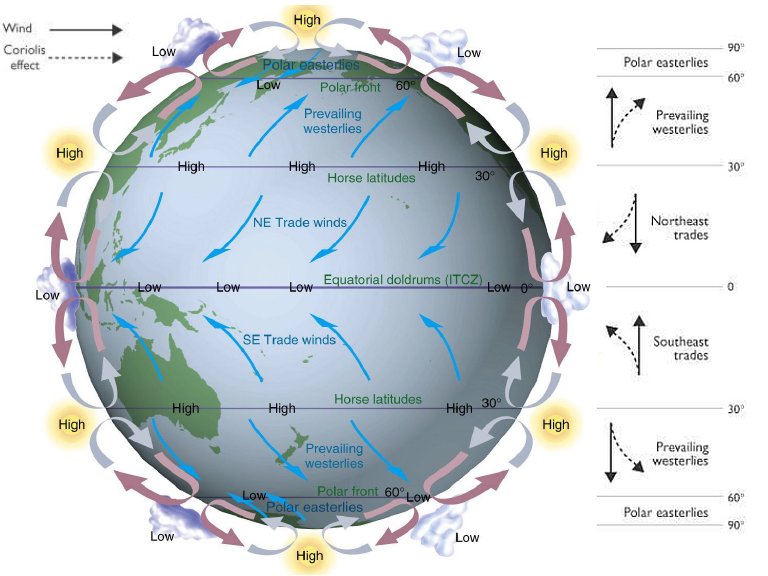Why don't hurricanes form in the Earth's polar regions?
1 Answer
The term hurricane only applies to tropic storms.
Explanation:
Hurricanes don't form in the polar regions because a storm does not receive the classification of hurricane strictly due to wind speed. There have been plenty of low pressures in the polar regions that have been strong enough to generate winds high enough to earn the title hurricane (these would be category 1 hurricanes) . Whenever you see a term like "polar vortex" or "arctic hurricane" you have a storm that if it was in the tropics would probably be a hurricane.
In regards to Coriolis, keep in mind that Coriolis in the Northern Hemisphere deflects fluids to the right and in the Southern Hemisphere to the left. Therefore the point where Coriolis switches the deflection (and the point where Coriolis is in fact zero) is the equator. Coriolis is strongest at the poles.
Coriolis effect and deflection directions:

On the diagram the words low and high are in relation to atmospheric pressure and do not reflect the strength of the Coriolis effect. The average pressure results in circulation patterns that generate the prevailing winds at various latitudes.
The 2 color arrows that form the loops on the side of the diagram are circulation cells that people may have hear of. The ones at the equator are called Hadley cells. The ones at mid latitudes are called Ferrel cells and the ones at the poles are call Polar cells.
The point about pole oceans temperatures is in fact somewhat true. The storms that form in polar regions tend to be less strong due to the cooler ocean temperatures.

